Comments from the EE Transportation Sector Editor:
Signs of mobility transforming to Teal are popping up. In this article, the author reports on the rising degree of complexity of mobility in urban areas and the need for multi-sector gatherings. How they interact remains open for discussion. (I suggest looking at Integral City and Meshworking). Multiple sectors can bring the mix of skills together which an integrated mobility platform requires. Such a platform would have a cooperative structure in which each stakeholder plays a unique role. (Roles are typical for Holacracy and Teal.) Public and private stakeholders would work together focusing on human-centric measures. It would create a revolutionary eco-system as the need for private cars would disappear, and sharing would be the main driver creating new social values.
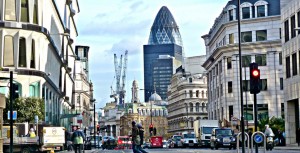
Written by Katrina Duncan of New Cities Foundation and originally published here in the NCF Blog.
On Wednesday, 14 October 2015 the New Cities Foundation welcomed about 150 of the most forward thinking practitioners from economics, policy, sociology, architecture and design, finance and technology to discuss the changing nature of urban mobility at Cities on the Move. The event was hosted by Google at their London headquarters, with support from Ericsson and Transdev.
“Conversations are cheap, infrastructure is really expensive,” remarked Tim Papandreou, Director, Strategic Planning and Policy, San Francisco Municipal Transport Agency, highlighting the value of multi-sector gatherings to reflect upon the future of urban mobility in a time of rapid innovation.
Blurring the lines between public and private
With an exciting mix of public and private representatives at the event, the topic of how these sectors interact in the world of mobility was a recurring point of discussion throughout the day. For a city like London, collaboration across sectors is key. Isabel Dedring, London’s Deputy Mayor for Transport, explained that it no longer makes sense for Transport for London (TfL) to operate in isolation; like other public organizations, it does not have the mix of skill sets needed to tackle the challenges of improving mobility in a rapidly growing city. To work in a forward-looking and efficient manner, TfL must work with innovators and financiers to provide the best mobility products and services to lead the way together.
“We need to work towards building an eco-system rather than an ego-system,” observed Jenny Lindqvist, Global Head of Intelligent Transport Systems, Ericsson. Each actor needs to play their part in designing and operating an overall transport system that works for each individual city. For example, two startups at the event from the U.S. are working to complement public transit services in their home cities. Bridj uses predictive big data to operate a pop-up mass transit system in real time, while Split uses open-data maps to work much like a car-pool, with drivers picking up passengers all going the same way from designated locations. As the lines between public and private transport service providers blur, the central point that should drive this ecosystem is the fundamental outcomes we want for a city: vibrant neighborhoods and economic opportunities, among others.
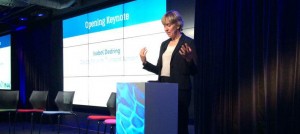
Is data in the driver’s seat?
For Tim Papandreou, mobility must be seen anew, as a platform welcoming all transport providers – whether public or private – under a framework of key criteria and shared data. The City of Bristol’s mayor, George Ferguson, for example, described his measures to embrace the digital future by enabling an Internet of Things that will operate throughout the city to create a laboratory of innovation with open participation. Open data is essential for allowing varied actors to work together to ensure that citizens get the transport services they need. Equally important in data-sharing is the role of academic institutions, whose technical capabilities are needed to verify the integrity of the data.
Sampo Hietanen, CEO of ITS Finland, spoke about Helsinki’s steps toward an integrated mobility platform that includes all forms of public and shared transport options in one system with the aim of making private cars virtually obsolete. The audience was keen to discuss how a platform for a city could be expanded to the next level: regionally, nationally or even one day, globally. Such a system could revolutionize urban mobility, but as Jean-Marc Janaillac, Chairman and CEO, Transdev, reminded us: one size does not fit all – a pragmatic approach is key in collaboratively designing services that adapt to the individual cases of different cities.
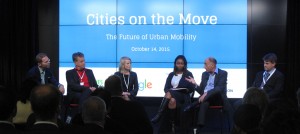
Mobility and proximity as a service
Transport is fast becoming more than a way to move people and goods; it is now a customer-oriented service, aiming to change the way the passenger uses time in transit. One way this is developing is in the form of driverless cars, one of many ways society has begun to reassess its idea of the car and its form. That’s the idea behind the driverless car experiment in Gothenburg, Sweden. Gothenburg Mayor, Anneli Hulthen, explained that the idea is to test various use cases where autonomous vehicles could be applied.
For Sarah Hunter, Head of Public Policy at Google [x], driverless cars form part of Google’s desire for a safer world of mobility, as the potential for human error behind the wheel – which causes up to 94% of road accidents in the U.S.1– is removed. Such innovations will also have an impact upon groups of people, such as the disabled, who currently have limited transport options. In the future, they will be able to better control mobility services independently for their particular needs.
Another piece of the mobility puzzle of the future is drones. Noah Raford, Head of Drones for Good, introduced the idea of ‘Proximity as a Service’ as a dominant concept for mobility. By providing supplementary services for delivery purposes, personal safety, or aiding emergency management, drones can be part of a total mobility solution for the future. We can view the drone as a self-flying scooter with a web connection, assisting from the unique perspective of the sky.
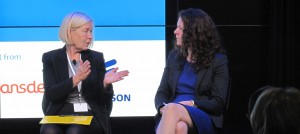
These cities were made for walking
Mobility forms part of the complex world of systems which make up a city. It is inextricably linked to our daily lives as a means by which we interact with each other. So we must think of the human scale, rather than the endless possibilities of technology. Ashwin Mahesh, Founder of Mapunity, encouraged us to think in shorter distances. Planners should consider the speed at which we need to move within the city to reach our destinations, run errands, or see friends within short trips of 3 to 6 kilometers. This means connecting neighborhoods and maintaining diversity within communities. Then, mobility becomes more than a techno-managerial issue: it transforms into a socio-political one.
For Riccardo Marini, Director of Gehl Architects, our solutions should have an innate simplicity which is based on an appreciation for how we function as human beings. Old cities were built for walking. But 1940’s urban development introduced pavements and a world built for car dominance, which is where the problems lie. We can learn from this, and all that this requires is a focus on innovations through the lens of a human model. After all, if our urban mobility decisions can influence the ultimate goal of the future of our health and well-being – what could be more important than this?
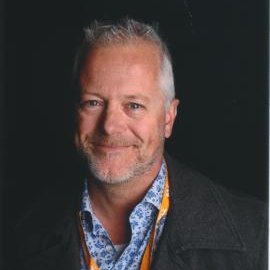 Stefan Groenendal, BSc, MBA, is an independent researcher and action consultant working and living in The Benelux. Fields of interest are, amongst others, organisational development, collaboration development, technology, information technology, value modelling. Sectors of interest are air traffic management, security, automotive, traffic management, marine, harbours. Follow me on Twitter @sgroenendal. Connect with me on Linkedin https://nl.linkedin.com/in/stefangroenendal
Stefan Groenendal, BSc, MBA, is an independent researcher and action consultant working and living in The Benelux. Fields of interest are, amongst others, organisational development, collaboration development, technology, information technology, value modelling. Sectors of interest are air traffic management, security, automotive, traffic management, marine, harbours. Follow me on Twitter @sgroenendal. Connect with me on Linkedin https://nl.linkedin.com/in/stefangroenendal



